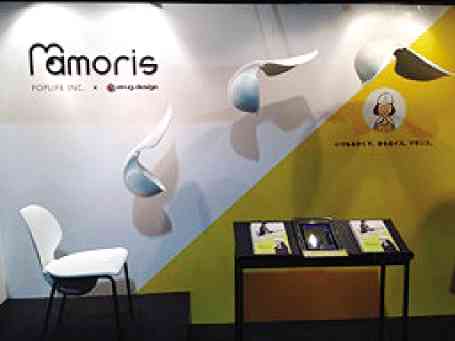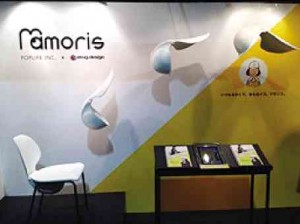
The delicate balance between form and function is perhaps what all designers strive for. Whether their specialty be product, interiors or graphic design, designers from all walks of life flock to the Tokyo Designers Week.
The Tokyo Designers Week is a design event hosted annually at the Meji Jingu Gaiden in the heart of Tokyo, and features design creations from both experts and novices alike.
Launched as Designers’ Saturday in 1986, modeled after the prestigious Salone del Mobile furniture show held annually in Milan, the event was renamed in 1997 and has since branched out to include a wider array of art and technology.
Its current form is a 10-day exhibit hosted every fall which gathers excellent design and art from all over the world, in areas close to our everyday lives such as architecture, interior design, product design, graphic design and art.
The event has allowed companies, organizations, embassies, schools and designers to place their creations in full view of the international community, by providing them with a venue for
showcasing their latest design and art through PR, product promotion, marketing and testing.
The 2013 Tokyo Designers Week was held Oct. 26-Nov. 4, and dubbed Creative Fes: Design, Art, Music. The show was divided into three categories: corporate exhibits, independent exhibits and school exhibits.
Corporate exhibits took up majority of the event, featuring international brands like Lexus, Samsung and Lufthansa. Independent designers were given this opportunity as well. The school exhibits, on the other hand, featured creations by talented young design students from universities around the world.
Even more diverse were the products on display, which ranged from self-sustaining garden houses to wooden iPad keyboard cases and mustache-shaped paper clips.
It was also interesting to note that most of the products on display were for sale. If you saw something crazy or unique that you liked, you could purchase it on the spot. The booths were even set up in a labyrinth-like way, and you could literally get lost in the diversity. It was like a designer’s Wonka Chocolate Factory.
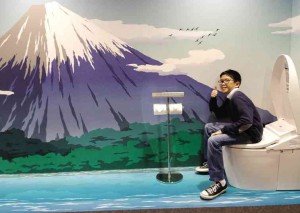
Several designs stood out among the corporate exhibits, one of which was the largest on display, the Sekisui Garden House. Founded in Japan in 1960, and having built over two million homes, Sekisui House has been one of Japan’s largest and most respected community and infrastructure developers.
They have received an array of awards for innovation, quality and sustainability, and their newest self-sustaining garden house is just one way they continue to innovate the home-building industry.
With the vision of promoting a healthy lifestyle, one at peace with nature yet with the convenience of modern technology, the Sekisui House’s revolutionary garden home allows you to grow your own food, as well as live and dine al fresco 24/7.
Another highlight of the corporate exhibition was what I like to refer to as the “novice lane.” While big names like Samsung and Lexus showcased their latest breakthroughs in one corner, smaller enterprises from around the world were given the opportunity to display their own designs and ideas in another.
“Novice lane” featured a diverse lineup of designers from around the world, including brands from Mexico, Hong Kong, France and, of course, Japan. One particular designer, Orée, originates from France and specializes in fully functioning, handcrafted computer accessories fashioned entirely from wood.
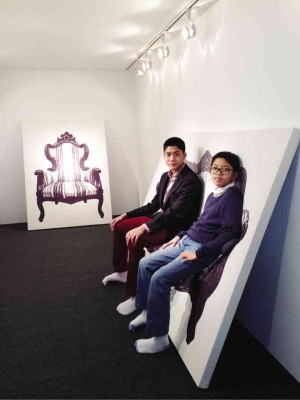
A lot of the companies also set out to solve pressing issues with the power of design. Japanese designer Mamoris created a chair that can be used as a helmet against falling debris in the event of an emergency.
Surrounding the large central tent are smaller ones, which housed independent exhibits by stand-alone designers who enthralled audiences with their whimsical creations. Not bound by corporate agenda, the pieces in this exhibit were the most bizarre. From grass-lined furniture to food-shaped utensils, on display were items you thought you’d never see.
This year’s indie exhibit also featured the works of Filipino fashion designer Paul Cabral, who presented his line of traditional Filipino gowns.
The final exhibit added a pinch of competition to the mix, as the universities that showcased their designs in the 2013 school exhibition were also competing for the prestigious Asia Awards. The participants brought international diversity to the table, representing universities from around the world like Centro Integral De Moda from Mexico, Tsinghua University Academy of Arts and Design from China, and our very own University of the Philippines College of Fine Arts.
One particular exhibit stood out from the rest. Industrial designer Adem Önalan, representing the Middle East Technical University from Turkey, captured the attention of passersby with his invention: the Life-Box.
With so many falling victim to natural disasters in recent years, Önalan sought to make quick response to large-scale calamities easier and more cost-effective. His invention is essentially a rectangular box that comfortably holds up to eight individuals, while capable of being folded for easy storage and transport. It is airdrop capable and can be deployed on land or water.
Outfitted with a parachute, the Life-Box unfolds automatically, with the help of strategically placed carbon dioxide canisters, into an inflatable temporary shelter that comes with
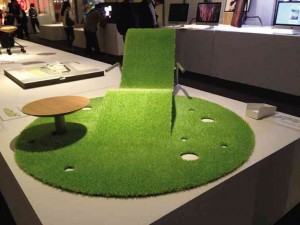
provisions like food, water and medical supplies. It can also be linked with other Life-Boxes to form larger and more stable structures.
A bonus feature is the Life-Box’s reusability, with the rations and carbon dioxide canisters being the only components that need replacing.
Some 3.4 million years ago, we first crafted stone tools. Then, 1.8 million years ago, we invented fire. Now we have the ability to fly in airplanes, travel through space and send messages across the globe at the push of a button. No other factor has shaped the world as extensively as human development.
Scientists, engineers and, of course, designers surprise us every day with new inventions that constantly change the way we live. With breakthroughs in green technology, faster and more powerful smartphones and even edible clothing, the future looks bright for the realm of design. With the 2014 Tokyo Designers Week just around the corner, the possibilities are endless.
For comments, please e-mail the author at [email protected].

